Don't Drink the Google Kool-aid: Autonomy's Limits in Three Sips
Please welcome TTAC’s newest contributor, Professor Mike Smitka. Mr. Smitka teaches a course on the Economics of the Auto Industry at Washington and Lee University in Lexington, Virginia and is regarded as an authority on the automotive world. He also makes time to read and comment on TTAC.
Google’s senior executives are busily touting the wonders of autonomous vehicles. There’s the technological marvel, at least in the eyes of Silicon Valley. There are the economic benefits – no more congestion, no more accidents. Wonder of wonders! – and great for the Google empire, and for its stock price.
The Google PR machine is a marvel to behold, and the gullibility of the audience – well, it’s Google! They have the wherewithal to launch a concept car, or rather 100 copies of one, with footage [er, a few megabytes?] of a blind man and a child in what would normally be the driver’s seat. But is their technical contribution really that big? Will economic benefits be as great as they claim? Indeed, will Google even be a player in future vehicle technologies? Their PR machine is not paid to probe such issues, much less point out that alternative technologies may bring the core benefits more quickly and at a modest cost. Oh, and without generating a penny of revenue for Google…
First, the core innovations necessary for an autonomous vehicle are already on the road, the result of decades-long engineering efforts alongside which Google’s investment and expertise pale in comparison. Go back 20-odd years and Delphi (then still a part of GM) was already mapping the creation of a “cocoon” that would protect the driver. Blindspot detection, lane departure warnings, backup “assist” (shh, don’t call it a safety feature, there might be lawyers around) and adaptive cruise control were all part of their vision. They’d acquired Hughes Aircraft [which eventually morphed into DirectTV] to get the engineers needed to start migrating military radar and control technology into cars. Over time the electromechanical enablers went from dreams to practical (if not always affordable) devices. First came electrically-activated brakes (and eventually electronic stability systems), then E-steer, and all sorts of engine and transmission controls, radar systems on a single circuit board, vision systems. Delphi’s dream is now a reality.
Again, these have been on the road for years, though some in numbers too small to affect overall safety or congestion. All these systems are falling in price. So we don’t have to await an entirely new generation of vehicles to begin reaping the benefits. Crucial to Google’s vision is that these are all partial solutions. But once adaptive cruise control is pervasive, will what Google offers will be more than a marginal improvement, with (Google hopes!) a non-marginal jump in the price tag?
So it is not obvious to me that Google will have any role in vehicles short of full autonomy – after all, their presence has not been needed for these existing tools! Nor will car companies be eager to jump into bed with Google. Quite the opposite – the industry has a long history of breaking up systems into smaller pieces and mandating licensing so as to avoid dependence on any single supplier. It’s not that Google’s role won’t be appreciated; their roadmap has already got regulators thinking in a more integrated way about this panoply of new vehicle technologies. That’s not a trivial contribution, but it’s not going to boost their stock multiple.
Second, Google’s is not the only approach. In particular, connected vehicle technologies promise most of the benefits at a far lower price point and with a faster rollout. Such systems are inexpensive because they can use the copious computing power already in car, while the hardware consists of inexpensive RFID transponders. The pieces of such systems are now being tested on the road, with a large test facility, the Michigan Mobility Transformation Center – an artificial cityscape – under construction in Ann Arbor, adjacent to the University of Michigan Transportation Research Institute. Such systems don’t require the manifold sensors of an autonomous vehicle. Indeed the core components could be sold as an aftermarket item, albeit with lower functionality. Such connectivity could be rolled out in the course of years.
In contrast autonomy will require decades. Yes, Nissan is talking about having their first autonomous vehicle on the road as early as 2018, regulators permitting; more realistically, we’ll start seeing “real” vehicles from 2020, given the lead time for vehicle development when new systems are involved. (It’s not just that the hardware and software have to be integrated into existing vehicles, it’s also that test procedures need to be developed for both the hardware and the software.) By 2025 the industry will have enough vehicle-years of experience to address regulatory fears and start the path to consumer acceptance. (In the background, the industry will need to coalesce around how to implement such systems; SAE standard-setting committees will be very busy!) Then production capacity has to be ramped up – global vehicle production by that point will be over 100 million units a years. So that’s another 10 years, bringing us to 2035. And then the fleet must turn over; with the average age of vehicles now over 11 years and rising, that will mean another decade for half of all vehicles to be autonomous. We’re thus looking at 2045 and beyond. In contrast, a combination of aftermarket and designed-in RFID systems could be on every vehicle by 2025, offering varying levels of collision avoidance and traffic flow smoothing.
Third and finally, what will be the benefits? Google likes to trumpet the elimination of accidents and the end of congestion. Perhaps. The trucking industry stands to benefit, though again this will be incremental to what is already on the road (truck trains are already running in Europe). However, if you’re in LA or Beijing, well, the restructuring of where people on average live versus where they work will take decades. Furthermore, to the extent adaptive cruise control speeds traffic, the initial impact will be to make longer commutes along major arteries more attractive, so that these roads will have to carry every more cars. Folks, congestion is here to stay.
In the meantime, a household will still need a vehicle (or two!) for commuting, so we won’t be able to get rid of all those cars. Nor will autonomous vehicles be so inexpensive that suburbanites will have one for the daily drive and another for kids and yardwork, else battery electric vehicles would already be the dominant vehicle on the Beltway around DC.
Yes, accidents will fall. Perhaps in some distant utopia we’ll no longer need airbags or crumple zones. Will connected vehicles deliver all these benefits? No. In particular, aftermarket devices could only offer warnings, not take over steering and braking. But they’ll come close, and at a price point and with a time horizon quite different from the drink Google wants us to imbibe.
Mike Smitka is an economist at Washington and Lee University in Lexington, Virginia. He’s been a judge of the Automotive News PACE supplier innovation awards since they began in 1994. His household’s vehicles are a 2014 Chevy Cruze, a 2013 Honda CR-V and a 1988 Chevy pickup. Find his auto industry course at Econ 244; he also blogs at Autos and Economics
.
Mike Smitka is an economist at Washington and Lee University in Lexington, Virginia. He's been a judge of the Automotive News PACE supplier innovation awards since they began in 1994. His household's vehicles are a 2014 Chevy Cruze, a 2013 Honda CR-V and a 1988 Chevy pickup. Find his auto industry course at <a href="http://econ244.academic.wlu.edu/">Econ 244</a>; he also blogs with David Ruggles at <a href="http://autosandeconomics.blogspot.com">Autos and Economics</a>.
More by Mike Smitka
Latest Car Reviews
Read moreLatest Product Reviews
Read moreRecent Comments
- SCE to AUX I hope they're buying good lawyers, too.
- SCE to AUX Nothing to see here. Gas prices 2021-23 were the same as they were in 2007-2008, adjusted for inflation. The R's were in charge then.https://www.randomuseless.info/gasprice/gasprice.html
- VoGhost Just reminding us all that we have to tolerate dealers (many of whom are billionaires) in the US if we want new legacy ICE vehicles because the dealers pay for the campaigns of local politicians, with our money.
- 1995 SC I'm still trying to get past the fact that the Red Bull guy is married to a Spice Girl.
- Ravenuer Not into F1. Started watching NASCAR back when they raced actual cars. (yeah I'm that old). Not any more. They aren't "stock cars" now. Not even close. Even drag races don't interest me anymore. Races are over in 3 seconds.



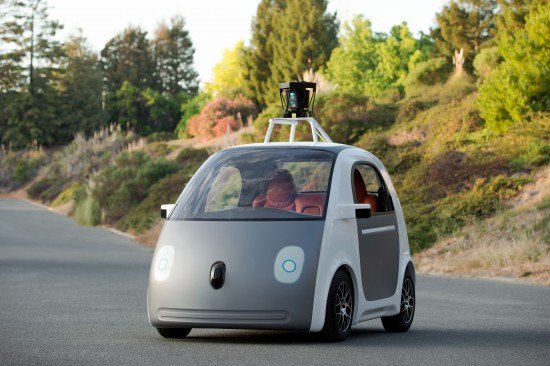















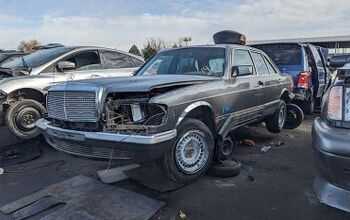
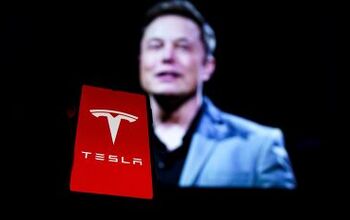
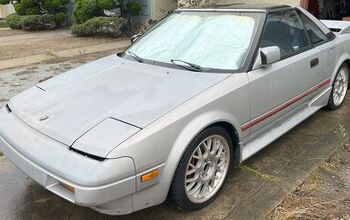
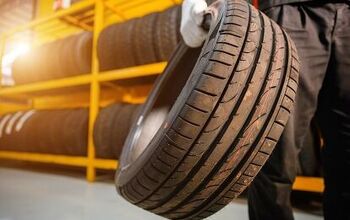

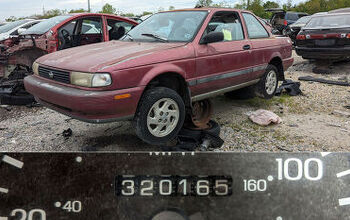
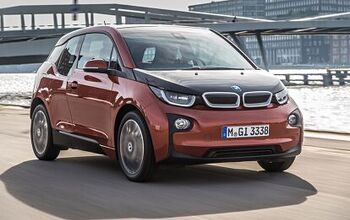
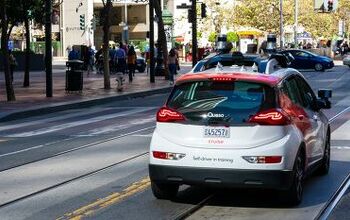



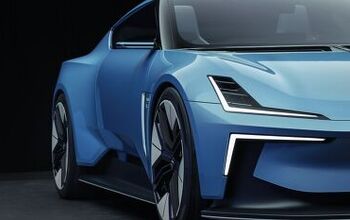

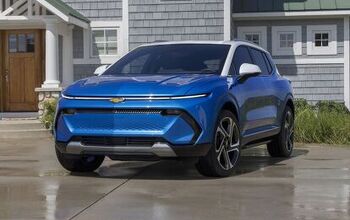
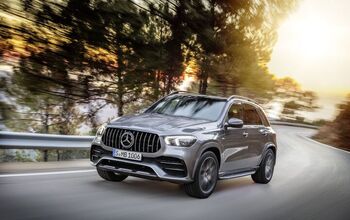
Comments
Join the conversation
Easier, cheaper, and reliable? Easy to predict. Anyone who wants to bet the farm is free to. Who knows, by the time any of this comes to pass we might be able to transport ala Star Trak. We might just jump over autonomous vehicles altogether. To return to my previous analogy - This is like one person claiming his grandmother is in orbit around Mars and others arguing for or against.
We all realize the enormity of the challenges, technically as well as legally. Nonetheless, if Google pulls it off, it may well work towards hitting a hole in one. Not only the automobile industry may be targeted, yes or no allying itself with a big (car) brand, but also car ownership itself and... public transportation. People may well tend to 'differentiate' car use in the future. Take, rent, borrow the big V8 gas-guzzler when it's time to enjoy or pose. A lightweight robocar for routine purposes, such as commuting, running errands, etc. That's because the car, that four-wheeled metal box, as it is known today... - sits idle 90-95% of the time, taking up precious space - when used the car's monthly energy bill easily exceeds that of most households' - weighs 15-25 times as much as the often times single occupant (the driver) - ergo: most of the stuff people 'feed' the car (fuel) is used to move around the car... not the occupant(s) - single occupancy of a car is most frequent during rush hour, contributing to gridlock - represents the biggest consumer purchase most people do - depreciates at a rate that would drive people insane if that happens to housing prices.